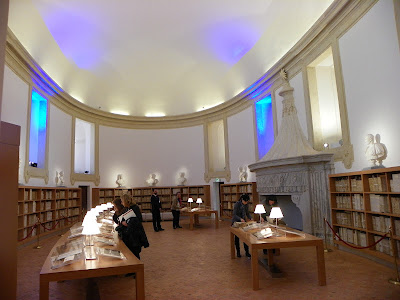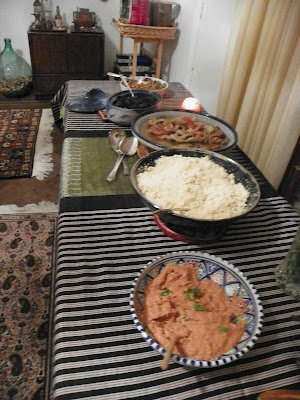 |
| 4 kinds of frappe- chocolate, honey, fried and baked from Pasticceria Andreotti. |
 |
| frappe al cioccolato fritto - fried chocolate frappe |
 |
| the classic frappe (fried) |
 |
| other carnival treats- chocolate covered meringue masks and a cookie mask |
 |
| honey frappe and chocolate frappe in the baked (i.e. healthy!) version from pasticceria "Lotti" |
 |
| One place to find these treats - DAGNINO between Via Torino and Via Emanuele Orlando in the galleria esedra. The Rome branch opened in 1955. |
 |
| frappe in window of DAgnino |
 |
| Carnival Donuts. Haven't tried these treats yet! |
 |
| Had the pleasure of sampling four different types of frappe (above) from this wonderful pasticceria which has been in Rome since 1931. |
 |
| bar/pasticceria Lotti on Via Sardegna (off Via Veneto) since 1917. |
 |
| Valentine's display window at D'Agnino- just happened to come during frappe season! |
 |
| Bar/Pasticceria Lotti-started as a gelateria (ice-cream store) in 1917 |
 |
| Carnival for all ages |
 |
| "Coriandoli" which gets thrown all over the streets, people, objects etc. |
 |
| carnival enthusiasts on the float |
 |
| float being driven by a tractor as it goes down Via Nazionale |
We are now in full swing of "Carnivale" which culminates on Tuesday with Mardi Gras. Italian children get a lot out of Carnival as they are often on parade in their costumes anytime prior to Mardi Gras, or Martedi' Grasso as it is known here. This year due to our two in a row weekend snowfalls the children have been left with this weekend to celebrate. This morning there was a colorful, noisy parade down Via Nazionale with lots of princesses, pirates, clowns, honey bees etc. all celebrating by spreading lots of colorful coriandoli (confetti) all over the streets and on anyone else in their path.
Young and old alike also get to celebrate with special treats (most of which are fried) and made prior to Mardi Gras to fatten us up. One of these is frappe, a thin, light sort of pastry made from flour, eggs, sugar and butter. Frappe are sold all over Italy and depending on the region you find yourself in the name changes. They are also know as Chiacchiere, Crostoli, and in Venice as Galani. But I think the ones in Rome taste the best.
The classic frappe is fried but in recent years they have become available in a baked version (frappe al forno, the healthy ones!) as well as in chocolate drizzled, honey drizzled, and pistacchio versions.
 |
| Only in Venice (in Jan.) have I sampled these fabulous Carnival treats, apple fritters. Melted in your mouth |
We are fortunate in that two wonderful pasticcerias (Dagnino and Lotti) are within walking distance and we had the good fortune of being treated, by good friends, to some delicious frappe from another very famous pasticceria, Andreotti. I have also found that in the Testaccio market the bread maker in the middle of the market makes some lovely chocolate covered, zig-zagged frappe. Frappe/Carnivale season has been great but it needs to end soon!
Buon Carnivale!

































































